How are the latest deals impacting the NBA landscape? Kevin Pelton is breaking down the biggest signings, opt-ins and contract extensions.
![]() Trade grades | Quiz: Which NBA front office should you run?
Trade grades | Quiz: Which NBA front office should you run?

OCT. 30 DEAL
Bojan Bogdanovic: Two years, $39.1 million
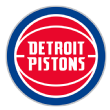 When the Detroit Pistons acquired Bogdanovic from the Utah Jazz last month, it looked like a rental of a veteran in the final season of his contract. Instead, Bogdanovic could be sticking around a bit after agreeing to the longest possible extension he could sign so soon after the trade.
When the Detroit Pistons acquired Bogdanovic from the Utah Jazz last month, it looked like a rental of a veteran in the final season of his contract. Instead, Bogdanovic could be sticking around a bit after agreeing to the longest possible extension he could sign so soon after the trade.
Bogdanovic has been a bright spot during a slow start for Detroit, which is 1-5 entering Sunday's game against the Golden State Warriors and has been outscored by a league-worst 13.1 points per game. He's averaging 23 PPG, which would be a career high, and making an unsustainably hot 51% of his 3-point attempts.
It's easy to see the appeal of Bogdanovic to a team building around recent lottery picks Cade Cunningham and Jaden Ivey in the backcourt. He doesn't need the ball in his hands on a regular basis and supplies floor spacing that makes life easier for Cunningham and Ivey.
The big question is whether the Pistons are close enough to contending to justify utilizing much of next season's projected $40-plus million in salary-cap space on extending a player who will turn 34 in April. The hope was Detroit would take a step forward this season after winning 43 games over the past two combined. Instead, the Pistons have started even worse.
Of course, Detroit could still trade Bogdanovic at some point. Because his extension is for just two years and less than a 5% raise over his current salary, Bogdanovic will not be subject to extend-and-trade restrictions. (In this case, Bogdanovic wasn't eligible for that kind of an extension yet anyway because he'd recently been acquired via trade.)
Whether this extension makes Bogdanovic more tradable might depend on the team. Anyone acquiring him now gets the certainty of having Bogdanovic under contract rather than testing unrestricted free agency, albeit at a favorable salary for a player in his mid-30s.
If Bogdanovic keeps playing like he has thus far, this extension will look like a bargain. And the Pistons might not have any interest in moving him elsewhere.
OCT. 17 DEALS
Brandon Clarke: Four years, $52 million
 An extension for Clarke continued the Grizzlies' focus on retaining their own talent as their young players develop. Of the 15 players under full NBA contract for Memphis entering opening night, all but two are signed through at least 2023-24: starting wing Dillon Brooks (who could still sign an extension, though he could probably make more by hitting unrestricted free agency) and injured veteran Danny Green.
An extension for Clarke continued the Grizzlies' focus on retaining their own talent as their young players develop. Of the 15 players under full NBA contract for Memphis entering opening night, all but two are signed through at least 2023-24: starting wing Dillon Brooks (who could still sign an extension, though he could probably make more by hitting unrestricted free agency) and injured veteran Danny Green.
With seven players on their first NBA contracts, the Grizzlies will still be well below the luxury-tax line next season and won't have to worry about the tax until an enormous anticipated raise for Desmond Bane, who will be up for a rookie extension next summer.
By that point, Clarke should remain a good value and a key part of Memphis' core. As a reserve, Clarke gives the Grizzlies the ability to play a smaller and more modern style when he spells Steven Adams at center. That look was crucial to Memphis holding off the frisky Minnesota Timberwolves in the first round of last year's playoffs, when Clarke averaged 16.5 PPG and 9.0 RPG on 68% shooting.
This extension guarantees Clarke a tad more ($50 million) than the non-taxpayer midlevel exception, projected at $49 million next offseason. Realistically, Clarke was going to have a tough time doing better than that in restricted free agency. From Memphis' standpoint, squeezing him harder wasn't worth it at the risk of giving up a full four-year contract that will be worth less than the midlevel as the cap increases.
Because he entered the league at 23, Clarke is already in his prime, so securing a lucrative payday now is a win for him too.
Nassir Little: Four years, $28 million
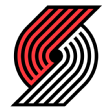 A four-year, $28 million deal for Little is unusual because it combines such a low average salary with the longest possible non-max rookie extension. In fact, no player has signed a rookie extension for as little annually since Jeremy Lamb (three years, $21 million) in 2015, back when the NBA salary cap was 43% lower than its current value.
A four-year, $28 million deal for Little is unusual because it combines such a low average salary with the longest possible non-max rookie extension. In fact, no player has signed a rookie extension for as little annually since Jeremy Lamb (three years, $21 million) in 2015, back when the NBA salary cap was 43% lower than its current value.
This deal is reminiscent of the summer of 2015, when Portland signed Al-Farouq Aminu to a four-year, $30 million contract that proved a bargain after the cap spike. Of course, Aminu was a valuable starter on teams that reached the playoffs all four years of his deal. Little has yet to prove he's capable of that, though at 22 he has time to get there.
Little started a career-high 23 of the 42 games he played in 2021-22 before season-ending shoulder surgery, but he saw Josh Hart win the starting job at small forward in training camp. Little's energy and finishing (57% career on 2-point attempts) are already starter-quality. It's his outside shooting that lags. Little shot 33% on a career-high 154 3-point attempts last season. If he can get to league average beyond the arc, Little will become a much more viable starting option.
From Little's perspective, this extension offers security. All $28 million are guaranteed, unique among the non-max rookie extensions signed this year, as the others have featured at least some degree of incentives. And he'll hit unrestricted free agency at age 27, offering a chance to cash in. Still, I'm surprised Little wasn't more eager to bet on himself this season.
The Blazers will push into the projected luxury tax for 2023-24 if they extend the contract of newcomer Jerami Grant, eligible to sign for a starting salary up to $25-plus million as of Jan. 7, when six months have passed since the trade sending him to Portland. But Little's modest extension will make the Blazers' payroll more manageable next season.
Kevin Porter Jr.: Four years, $82.5 million
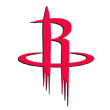 A fascinating structure makes Porter's extension more akin to an NFL contract than a typical NBA one. As ESPN's Bobby Marks explained, just the 2023-24 base salary ($15.9 million) is guaranteed of the $82.5 million maximum value.
A fascinating structure makes Porter's extension more akin to an NFL contract than a typical NBA one. As ESPN's Bobby Marks explained, just the 2023-24 base salary ($15.9 million) is guaranteed of the $82.5 million maximum value.
Additional base salaries for both the 2024-25 and 2025-26 seasons, totaling $31.6 million, guarantee if Porter is still on the roster through June 30, 2024. And his $15.8 million salary for 2026-27 also guarantees a full year ahead of time in 2025, meaning the Rockets will have to decide well in advance if they want to move on from Porter without paying him those full amounts.
Add in $19 million incentives and Porter could get paid like an average starter if he maxes out this contract. Houston is betting on Porter's development and the rising cap to provide value on top of that.
One encouraging sign: Porter ranked as one of the league's most valuable players by my wins above replacement player (WARP) metric during the preseason, making 10 of 19 3-point attempts and rebounding better than ever in his career. Given Porter is just 22, there's surely improvement to come so long as he can stay focused on the court.
Still, we need to see a larger sample of efficient scoring from Porter, whose true shooting percentage has been comfortably worse than league average throughout his three-year career. Add in a high turnover rate and inconsistent defensive effort, and Porter hasn't yet even performed like a good reserve.
The Rockets are essentially paying $15.9 million -- far, far more than Porter could have expected to get in restricted free agency -- for the right to decide after the next two seasons whether to move forward with him. Given how much cap space Houston will have in 2023-24 (still projected at nearly $40 million, including Eric Gordon, who could be traded by then), that's a reasonable gamble.
De'Andre Hunter: Four years, $95 million
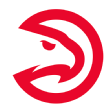 The 11th and final player to agree to a rookie extension before Monday's deadline, Hunter also made a clean sweep of the top five picks signing extensions, just the second time that's happened since the NBA instituted rookie contracts in 1995. (It previously took place with the legendary 1996 draft.)
The 11th and final player to agree to a rookie extension before Monday's deadline, Hunter also made a clean sweep of the top five picks signing extensions, just the second time that's happened since the NBA instituted rookie contracts in 1995. (It previously took place with the legendary 1996 draft.)
Ascertaining Hunter's value was a little more difficult than the rest of the top five. The No. 4 pick has had excellent moments in Atlanta, including averaging 21.2 PPG on 46% 3-point shooting in last year's first-round loss to the Miami Heat. However, Hunter has had a difficult time putting it all together on a longer-term basis and staying healthy.
During 23 games in 2020-21, Hunter shot 58% on 2-point attempts. Last season, he hit 38% of his 3s. Put those together with Hunter's defensive versatility and you'd have the makings of a star. Alas, that small-sample shooting inside the arc was out of line with the rest of Hunter's career, as he's hit just 48% overall on 2s. And his 3-point shooting in 2021-22 was also a career high, albeit one he's more likely to maintain as he develops.
Overall, Hunter scored with below-average efficiency last season despite his accuracy beyond the arc. And he's played just 76 games total over the past two years, although last year's 26-game absence due to wrist surgery is less likely to have long-term ramifications than the time Hunter missed in 2020-21 (including the last two series of Atlanta's run to the Eastern Conference finals) due to a troublesome right knee.
Given that history, it's no surprise Hunter would want to lock in his value rather than taking his chances in restricted free agency next summer. Meanwhile, the Hawks avoid a scenario where Hunter broke out this season at age 25 and became far more expensive -- which could have created luxury-tax issues.

MORE OFFSEASON DEALS
Warriors, Poole agree to 4-year, $140 million extension

Waiting until the final weekend before Monday's deadline for extensions to rookie contracts paid off for Poole. He was able to sit back as first RJ Barrett and then the similar Tyler Herro set the market for sub-max extensions, striking a deal with the largest possible salary of those three players at $140 million, according to colleague Adrian Wojnarowski.
Both Barrett ($13 million of his $120 million deal) and Herro ($10 million of his $130 million) have substantial incentives as part of that total, and it's reasonable to expect something similar with Poole.
Still, it seems likely he'll eclipse their base salary. And as our Bobby Marks pointed out on Twitter, Poole's maximum contract will be close to the largest possible offer sheet ($144 million) another team could have made him as a restricted free agent next summer based on current cap projections.
By comparison to that possibility, the Warriors should benefit from a team-friendlier contract structure. If there are incentives in Poole's contract, it's worth watching how realistic they are to hit, which can dramatically change the value of the deal.
Golden State also likely locks in Poole for four years at a slightly lower starting salary with bigger raises than an offer sheet, important as they look to manage their luxury-tax bill before an expected jump in the salary cap in 2025-26.
Additionally, by acting now, Golden State avoids questions about Poole's future in the Bay -- particularly important in the wake of Poole being punched by teammate Draymond Green during practice earlier this month.
Already, Poole had established himself as a crucial part of the Warriors' future as their second-best offensive player after two-time MVP Stephen Curry. Among the 50 NBA players last season with a usage rate of at least 25% of their team's plays while on the court, Poole's .598 true shooting percentage ranked 11th -- one spot behind Curry.
That outcome seemed unthinkable when Poole struggled with his shot selection and shot-making as a rookie, making 28% of his 3s and 39% of his 2s. Poole made huge strides in his second season, becoming a bench anchor as Golden State surged down the stretch before losing in the play-in, and consolidated them in 2021-22 as both a starter in place of the injured Klay Thompson and later a reserve.
Still just 23, Poole can continue his progress as a playmaker to go along with his scoring. Last season's 4.8 assists per 36 minutes were easily a career high. Per Second Spectrum tracking, that increased to 5.7 per 36 when Curry was on the bench, making Poole the Warriors' primary ball handler.
Poole will have to remain an elite offensive player to justify this contract, even as the cap rises, because of his limited contributions at the other end. His steal and rebound rates are both below average for a guard and Poole's slight, 6-foot-4 frame will always make him a target defensively.
As Marks noted in his analysis of a possible extension, Golden State got lit up at historic scoring rates in the playoffs when Poole defended the player receiving a screen.
Those shortcomings ultimately made it hard for Poole to play big minutes in the NBA Finals. He averaged just 20.8 MPG in the series, including a combined 32 in the Warriors' last two wins. Still, Golden State wouldn't have gotten that far without Poole's strong play in the first three rounds, which saw him average 18.4 PPG on 53% shooting, 39% from 3.
It's also worth noting that extending Poole at a high number doesn't foreclose any options for the Warriors, who still have the ability to extend the contract of forward Andrew Wiggins before he hits unrestricted free agency next summer and retain Green if he declines a $27.6 million player option for 2023-24.
The question is simply how much of a luxury-tax burden Golden State is willing to shoulder to keep together the group that won last year's championship. If the Warriors are in contention again and generating high-revenue home games deep into the playoffs, that becomes a lot easier to justify.
Heat, Herro agree to 4-year, $130M extension
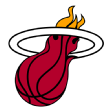 Tyler Herro's negotiations with the Miami Heat on an extension to his rookie contract figured to be some of the most interesting ahead of the Oct. 17 deadline for such deals because of his divisive value as a player.
Tyler Herro's negotiations with the Miami Heat on an extension to his rookie contract figured to be some of the most interesting ahead of the Oct. 17 deadline for such deals because of his divisive value as a player.
In the wake of his breakout playoff run as a 20-year-old rookie who helped Miami reach the NBA Finals in the bubble, Herro was anointed a future star.
During the 2021-22 regular season, Herro translated that potential into Sixth Man of the Year honors, averaging a career-high 20.7 points per game off the bench. Yet Herro's most recent postseason left more questions about his ability to help a contending team in a primary role.
In part because of a lingering groin strain, Herro's playing time dropped from 32.6 minutes per game in the regular season to 25.4 in the playoffs. He shot just 16-of-70 (23%) from 3-point range, which made it more difficult for Heat coach Erik Spoelstra to overlook the way opponents tend to target Herro defensively when he's on the court.
In his exit interview, Herro expressed a desire to start this season, telling reporters he'd "earned it." Legendary Miami president Pat Riley challenged Herro to continue developing as a two-way player, saying, "You have to improve in certain areas of your game. I saw improvement in his defense this year. He's got great, quick feet."
In the extension negotiations that took place against that backdrop, the Heat clearly valued Herro as a starter. Even accounting for the expected jump in the salary cap during the back half of this deal, the $30 million in guaranteed money Herro will average (plus $2.5 million more in annual incentives, per ESPN's Adrian Wojnarowski) figures to be appropriate for an above-average starter. Herro, who won't turn 23 until January, can get there by both improving his weaknesses and honing his strengths.
I'm particularly interested to see how Herro develops as a playmaker. Last season's 4.0 assists per game were also a career high. If Herro can eventually play point guard, it becomes easier to hide him defensively than when he's paired with a small guard in the backcourt.
The comps for Herro's extension were fascinating. The extension signed in August by RJ Barrett of the New York Knicks ($107 million guaranteed over four years, plus $13 million incentives) was surely a reference point for both sides.
Because of his inefficiency as a scorer, Barrett probably hasn't been as valuable thus far in the NBA as Herro. However, his strong defense gives Barrett a clearer path to two-way contributions than Herro. I might rather have Barrett going forward and would choose him when both players' contracts are factored in.
The other comparison for Herro is another high-scoring reserve guard on a contending team, Jordan Poole of the defending champion Golden State Warriors. I suspect Poole's camp is glad that Herro's extension got done early for this much guaranteed money, setting the bar for Poole's extension negotiations.
As with Barrett, Herro's extension subjects Miami to the so-called "poison pill" if he's traded before the new contract officially begins next July. During that period, Herro will count as incoming salary to another team at his average over the next five years, slightly more than $25 million. Meanwhile, he'll count his current $5.7 million going out.
Due to Herro's lower current salary and larger extension, the poison pill will be more of an obstacle to trading him this season. It's still possible to overcome it by building a large enough trade or sending extra salary to one of the remaining teams with cap space (the Indiana Pacers and San Antonio Spurs), but this deal signals the Heat probably aren't planning on trading Herro before the deadline.
Larry Nance, Pelicans agree on two-year extension
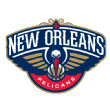 Last summer, Portland sent a protected first-round pick to get Nance as part of a three-team trade on the strength of his play with the Cleveland Cavaliers. Then in February Portland traded Nance, CJ McCollum and Tony Snell to the New Orleans Pelicans in exchange for Josh Hart, Nickeil Alexander-Walker, Tomáš Satoranský, Didi Louzada and multiple draft picks. It was easy to overlook Nance because he underwent arthroscopic knee surgery immediately after the deadline, postponing his New Orleans debut until late March.
Last summer, Portland sent a protected first-round pick to get Nance as part of a three-team trade on the strength of his play with the Cleveland Cavaliers. Then in February Portland traded Nance, CJ McCollum and Tony Snell to the New Orleans Pelicans in exchange for Josh Hart, Nickeil Alexander-Walker, Tomáš Satoranský, Didi Louzada and multiple draft picks. It was easy to overlook Nance because he underwent arthroscopic knee surgery immediately after the deadline, postponing his New Orleans debut until late March.
Nance's value became evident during the Pelicans' first-round series against the Phoenix Suns. His defensive versatility made him a key part of Willie Green's rotation. Nance averaged 21.6 MPG in the series, reaching double-figure scoring in three of the six games.
Extending Nance is in line with New Orleans' focus on continuity. The Pelicans are adding a healthy Zion Williamson and bringing back all 12 players who saw action in the 2022 playoffs, and of that group only Jaxson Hayes -- eligible for a rookie extension through Oct. 17 -- is not currently under contract for 2023-24. Keeping this group could come with a large price, though. Nance's extension pushes New Orleans over the projected 2023-24 luxury tax line before accounting for Hayes, although the Pelicans will have some flexibility to reduce their payroll. They hold team options on five players, and Garrett Temple's $5.4 million salary is non-guaranteed.
Depending how well this season goes, New Orleans might be willing to pay the tax for the first time in franchise history.
"When it's time to really go all-in on something, we will," Pelicans executive vice president of basketball operations David Griffin told reporters at media day.
The big squeeze for New Orleans might come in 2024-25, the second year of Nance's extension, when second-round pick Herb Jones is eligible for a new contract and starting center Jonas Valanciunas is an unrestricted free agent. Still, that's a ways off, and the NBA's new TV deal should ease any tax pressure the following season.
The deal is a win for New Orleans. The Pelicans keep Nance under contract for two additional years in his early 30s at a price point that will probably be below the non-taxpayer midlevel exception.
And Nance gets some stability after he has dealt with injuries throughout his career.
Steven Adams, Grizzlies agree on two-year extension
 The Adams extension is perhaps most interesting because of what it signals about the Grizzlies' plans for the summer of 2023, and by extension their moves leading up to that.
The Adams extension is perhaps most interesting because of what it signals about the Grizzlies' plans for the summer of 2023, and by extension their moves leading up to that.
Had Memphis let Adams and Dillon Brooks become free agents and renounced their rights, the team could have created about $20 million in cap space next summer. With the talent on the market already dwindling thanks to other extensions, that option -- which would have cost the Grizzlies a pair of current starters -- understandably no longer looked as exciting.
Instead, Memphis will probably prioritize trying to get as many extensions done as possible. Brandon Clarke is eligible for an extension to his rookie contract ahead of restricted free agency next summer, and a deal seems reasonable to expect before the Oct. 17 deadline.
Extending Brooks could be tricky because of the limit of a 20% raise in the first year of a veteran extension. That means the most Memphis can offer Brooks as a starting extension salary in 2023-24 is $13.7 million for a maximum four-year value of $61.3 million. Brooks might be able to do better on the open market as an unrestricted free agent next summer, though the Grizzlies can still re-sign him using Bird rights if no deal gets done beforehand.
That limitation wasn't an issue for Adams, who signed a second consecutive extension that sees his salary decline on the new contract. Given that Adams will turn 30 next summer and his traditional skill set for a center is no longer in high demand, he probably read the market correctly here.
Despite those concerns, Adams was an excellent fit with the Grizzlies during the 2021-22 regular season, starting 75 of his 76 games and leading the league in offensive rebound percentage. Adams surely understands he could see his role diminish in the playoffs, as was the case last season when he played sparingly against the Minnesota Timberwolves in the first round after starting the opening two games. Because of Adams' age, he might not be the long-term answer for Memphis next to Jaren Jackson Jr. in the frontcourt. If the Grizzlies do add a center of the future or decide to play Jackson there full-time, Adams' new salary won't be prohibitively expensive in a reserve role.
CJ McCollum, Pelicans agree to two-year extension
 The two-year, $64 million extension for New Orleans Pelicans guard CJ McCollum reported Saturday by my ESPN colleague Adrian Wojnarowski is interesting because of the combination of a declining salary in an extension to a contract with two years remaining.
The two-year, $64 million extension for New Orleans Pelicans guard CJ McCollum reported Saturday by my ESPN colleague Adrian Wojnarowski is interesting because of the combination of a declining salary in an extension to a contract with two years remaining.
We occasionally see players extend for less than they're currently making, but typically only when they're impending free agents and already have a good idea what their market might be. That was the case for Patrick Beverley and Robert Covington, who signed extensions rather than testing free agency over the summer. (Gary Harris, Taurean Prince and Thaddeus Young also technically signed extensions for less money after free agency opened, but those were essentially new contracts, not traditional extensions).
In this case, the willingness by both McCollum and the Pelicans to lock in a deal now rather than wait to see how the market evolves seems to be a product of how well his first few months in New Orleans went after a February trade from the Portland Trail Blazers.
McCollum was the playmaking backcourt presence the Pelicans had needed to complement their frontcourt talent, averaging 24.3 PPG and 5.8 APG after the trade. Both marks would have been career highs for McCollum, who had the ball in his hands less frequently playing alongside Damian Lillard in Portland.
Along with McCollum's play, the development of then-rookies Jose Alvarado and Herb Jones was a big factor in the Pelicans exceeding expectations by advancing through the play-in tournament and taking the top-seeded Phoenix Suns to six games in the opening round. With Zion Williamson set to return from the metatarsal fracture in his right foot that sidelined him all of 2021-22, New Orleans can realistically hope to sneak into the West's top six and avoid the play-in altogether.
Both sides are still taking risks here. McCollum will be 33 by the time this extension kicks in for the 2024-25 season, and while the Pelicans will benefit from an anticipated increase in the salary cap after the NBA signs new television deals, they'll still be paying McCollum like an above-average starter in the backcourt. He'll need to continue playing at that level.
Meanwhile, McCollum is foregoing the chance at an even bigger payday if he plays well the next two seasons in time to cash on a more robust market in free agency. Still, McCollum clearly enjoyed his role as a veteran mentor to New Orleans' young talent and will benefit from the security of this deal, so it makes sense from his standpoint and the team's.
LeBron, Lakers agree to two-year extension
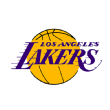 When the Los Angeles Lakers begin the 2022-23 season, already LeBron James will have played longer for them than any stint with a franchise since he began his career by playing seven seasons for the Cleveland Cavaliers. LeBron's time with the Miami Heat yielded not one, not two, not three but four years, the same period he spent with the Cavs in his second go-round.
When the Los Angeles Lakers begin the 2022-23 season, already LeBron James will have played longer for them than any stint with a franchise since he began his career by playing seven seasons for the Cleveland Cavaliers. LeBron's time with the Miami Heat yielded not one, not two, not three but four years, the same period he spent with the Cavs in his second go-round.
Part of the reason James has hopscotched from team to team more than most all-time greats is the way those teams have tended to deplete their resources in pursuit of championships. Essentially, LeBron has been his own version of the success cycle, taking teams that have stockpiled cap space and draft picks and quickly converting those into aging veterans who can help him win immediately.
By committing to a sixth season with the Lakers, James has already changed direction from that thinking. From the cold, logical perspective of pursuing as many championships as possible, LeBron would have been better off ditching L.A. after this season and finding a new team. As James' career winds down, the appeal of living in Los Angeles appears to have become the key factor in his decision-making.
It's also worth mentioning the Bronny element, if only because LeBron himself has done so.
Harden, Sixers agree to new deal
 Since the early days of free agency, James Harden has been the best unrestricted free agent available, albeit with a huge asterisk. There was never any question that Harden would return to the Philadelphia 76ers, but he declined a $47.2 million player option at the end of June and instead waited to negotiate his contract until after the Sixers completed their other business, giving them greater flexibility.
Since the early days of free agency, James Harden has been the best unrestricted free agent available, albeit with a huge asterisk. There was never any question that Harden would return to the Philadelphia 76ers, but he declined a $47.2 million player option at the end of June and instead waited to negotiate his contract until after the Sixers completed their other business, giving them greater flexibility.
Ultimately, Harden took a pay cut of a little more than $14 million as compared to his 2022-23 player option, a move that allowed Philadelphia to use the larger non-taxpayer midlevel exception and the biannual exception, both of which subject the 76ers to a hard cap of $157 million -- about $6.7 million more than the luxury tax line. Philly can't exceed that salary at any point this season.
Because Harden didn't quite take the full amount the Sixers had left under the hard-cap figure, they've still got some ability to add salary during the year. Depending on which of the four players Philadelphia has with contracts that are not fully guaranteed -- Charles Bassey, Isaiah Joe, Trevelin Queen and Paul Reed -- gets waived to cut the roster to 15 players under full NBA contract by opening night, the Sixers will have somewhere between $4.5 million and $4.8 million available. That figure would go up if Philadelphia instead trades a player with a guaranteed contract to get down to 15.
Alternatively, the 76ers could utilize Harden's pay cut to avoid paying the luxury tax this season and delay being subject to the repeater tax. After paying the tax each of the past two years, Philly would trigger the heftier repeater tax fines for 2023-24 by doing so again this season. The Sixers could try to duck the tax by trading either Furkan Korkmaz or Matisse Thybulle, potentially also freeing a roster spot for a buyout pickup after the trade deadline.
So what does Harden get out of his pay cut? First and foremost, the best possible chance to win a championship this season. Philadelphia used the $10.5 million non-taxpayer midlevel exception to add defensive stalwart P.J. Tucker, Harden's former teammate with the Houston Rockets who wouldn't likely have been available to the team using the smaller non-taxpayer exception ($6.5 million).
The thinking heading into free agency was that Harden declining his player option might work like Chris Paul's new contract with the Phoenix Suns from last year, when Paul sacrificed 2021-22 salary in order to sign a longer-term deal in his late 30s. Instead, Harden (who will turn 33 next month) agreed to a one-plus-one deal that adds only a $35.6 million player option for 2023-24.
Although Harden is protected against a worst-case scenario where his market value dips precipitously next summer, the bigger incentive is probably the opportunity to join the more robust 2023 free agent market, as ESPN's Bobby Marks noted on Twitter. If Harden enjoys a healthy and productive 2022-23 campaign, the number of potential suitors should allow him to bump his salary back up near the max on a long-term deal that will take him through his mid-30s.
Gibson headed to Wizards
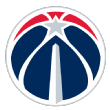 Even when the New York Knicks initially waived Taj Gibson last week, a necessary step to create enough cap room to sign both Jalen Brunson and Isaiah Hartenstein, I still figured Gibson might return to New York after clearing waivers. Instead, he's headed south down the Acela corridor, agreeing to a one-year deal with the Washington Wizards.
Even when the New York Knicks initially waived Taj Gibson last week, a necessary step to create enough cap room to sign both Jalen Brunson and Isaiah Hartenstein, I still figured Gibson might return to New York after clearing waivers. Instead, he's headed south down the Acela corridor, agreeing to a one-year deal with the Washington Wizards.
Adding Hartenstein and re-signing Mitchell Robinson gave the Knicks a crowd at center, where they've also re-signed Jericho Sims to a full NBA contract after Sims spent last season on a two-way deal. Hartenstein and Robinson should cover the center minutes most nights, with Sims for depth and the option of playing Julius Randle and Obi Toppin together in the frontcourt as a different look.
In Washington, Gibson should play a similar insurance role as the past two seasons. When healthy, Kristaps Porzingis and Daniel Gafford will likely play the bulk of the minutes at center. Gibson will compete with third-year center Vernon Carey Jr. for the third spot on the depth chart and the chance to move into the rotation if Porzingis and Gafford miss time.
Surely, the Wizards also value Gibson's veteran presence. Now 37, Gibson has seen it all during a 13-year NBA career, much of it spent playing for New York coach Tom Thibodeau across all three of Thibodeau's coaching stops. Aside from a brief period at the start of the 2020-21 season, the last time Thibodeau coached a team that did not include Gibson was in 2016-17 with the Minnesota Timberwolves.
Gallinari agrees to terms with Celtics
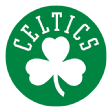 Two days after being waived by the San Antonio Spurs, forward Danilo Gallinari has formally agreed to join the Boston Celtics on what ESPN's Adrian Wojnarowski reported is a two-year, $13.3 million deal with a player option for the second season.
Two days after being waived by the San Antonio Spurs, forward Danilo Gallinari has formally agreed to join the Boston Celtics on what ESPN's Adrian Wojnarowski reported is a two-year, $13.3 million deal with a player option for the second season.
The Spurs waiving Gallinari was widely anticipated after they acquired him as part of their deal sending Dejounte Murray to the Atlanta Hawks. Gallinari's 2022-23 salary, guaranteed for $13 million due to the trade, would have become fully guaranteed ($21.5 million) had he not been waived by Friday, according to ESPN's Bobby Marks.
As a result, teams could plan on pursuing Gallinari at the start of free agency, allowing the Celtics to save their taxpayer midlevel exception -- Boston's only avenue for adding free agents at more than the veteran's minimum this summer.
Given his age (he turns 34 in August), Gallinari was an interesting free agent because he simultaneously is most appealing to contending teams but also less valuable in the playoffs due to his defensive limitations. Gallinari saw his minutes per game drop from 25.3 in the regular season to 22.4 in Atlanta's first-round series against the Miami Heat, despite starting three games in the absence of injured Clint Capela.
All of that makes Gallinari a tricky fit with the Celtics. During the regular season, he'll undoubtedly add depth in the front court and help Boston tamp down the workloads for starters Al Horford and Robert Williams III. Horford may spend more time at center during the regular season with the Celtics trading Daniel Theis as part of the Malcolm Brogdon deal, freeing up an opportunity for Gallinari at power forward.
Come playoff time, Gallinari presents a more attractive target to defenses who found few Boston players worth attacking 1-on-1 during the team's run to the 2021 Finals. It wouldn't be shocking if Gallinari falls out of the rotation entirely. Because the Celtics are so deep after adding Brogdon, they could easily manage without Gallinari if he struggles.
Quickly in free agency, it became clear there was no upgrade Boston passed on in favor of Gallinari, so the decision is understandable. I just hope both sides were up-front about how Gallinari's role might decrease in the playoffs.
Lillard strikes max extension with Blazers
 In a move that enhances the likelihood he plays his entire career with the Portland Trail Blazers, star point guard Damian Lillard agreed to a two-year extension Friday that will take his contract through a player option for the 2026-27 season at age 36.
In a move that enhances the likelihood he plays his entire career with the Portland Trail Blazers, star point guard Damian Lillard agreed to a two-year extension Friday that will take his contract through a player option for the 2026-27 season at age 36.
As my ESPN colleague Bobby Marks explained on Twitter, the value of that extension won't be known until the 2025-26 salary cap is set. At that point, Lillard's salary will be determined by a fairly confusing three-step process.
Lillard is eligible for a raise of up to 20%, which accounts for the $122 million in potential value that Marks reported. However, if the largest possible first-year salary ($58.5 million) exceeds the maximum salary that season (35% of the salary cap), Lillard will instead get the higher of the new max salary or a 5% raise off his 2023-24 salary for a minimum value of $106.6 million.
Either way, Lillard will remain one of the league's highest-paid players in the two new years of his contract. Given his age and size, realistically it's unlikely Lillard's performance will match the deal by that point. After extensions for John Wall and Russell Westbrook went south, the risks in paying an aging guard based on past performance are well established.
At the same time, it's hard to put a dollar figure on Lillard's contributions in Portland over the decade since he was drafted No. 6 overall out of Weber State. Lillard has led the Blazers to all four of their playoff series wins since 2000, highlighted by a trip to the 2019 conference finals, and is already second in career scoring for Portland.
By choosing again to stay with the Blazers, Lillard all but ensures he'll eventually pass Clyde Drexler to become the franchise's leading scorer and surpass Drexler and Terry Porter as the all-time assists leader as well.
Additionally, Lillard's incredible shooting prowess should ensure he retains his value well into his 30s, by contrast to the weak-shooting duo of Wall and Westbrook. Portland can hope Lillard follows a similar aging curve to Stephen Curry, who led the Golden State Warriors to a championship this season at age 34 and remains one of the league's best players.
Amid Durant drama, Nets continue filling out transitional roster
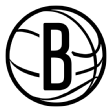 With trades likely for stars Kevin Durant and Kyrie Irving, the Brooklyn Nets are still making moves to fill out their 2022-23 roster despite a lack of clarity on how the top of it might look. The latest to join are a pair of former Indiana Pacers, neither of whom played last season because of injuries.
With trades likely for stars Kevin Durant and Kyrie Irving, the Brooklyn Nets are still making moves to fill out their 2022-23 roster despite a lack of clarity on how the top of it might look. The latest to join are a pair of former Indiana Pacers, neither of whom played last season because of injuries.
In T.J. Warren's case, a stress fracture in his left foot sustained four games into the 2020-21 season has kept him off the court ever since because of a series of setbacks in recovery. Before the injury, Warren was just coming into his own as a scorer, having averaged a career-high 19.8 PPG on 50-40-80 shooting in 2019-20. Warren capped that with his bubble performance: 31 PPG in six seeding games, highlighted by a career-high 53 points.
If healthy, Warren's improvement as a shooter makes him a good fit for a contending team. He's capable of defending either forward spot, having started at the 3 during the 2019-20 regular season before sliding to the 4 in the bubble thanks to an injury that sidelined Domantas Sabonis. Warren is more dangerous as a scorer playing power forward, but his size (6-foot-8) is a limitation in that spot.
Because of Warren's injuries, a one-year deal makes sense for both sides, protecting the Nets from risk if he continues to be sidelined but giving Warren the chance to rebuild his value if he plays well.
Edmond Sumner suffered an Achilles rupture during offseason workouts ahead of training camp last September, sidelining him the entire season. Brooklyn actually acquired him in October only to waive him shortly thereafter.
Before the injury, Sumner enjoyed his best season in 2020-21, starting a career-high 24 games and making 58% of his 2-point attempts and 40% of his limited 3s (88 attempts) to score with far better efficiency than his first two NBA campaigns. If Sumner can get back to that level, his defense at either guard spot makes him a valuable player. Having helped Durant come back from Achilles surgery, the Nets should have an idea how to manage Sumner's return to the court.
Bulls add depth with Dragic
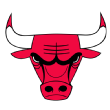 The Chicago Bulls agreeing to add Goran Dragic on a one-year deal for what The Athletic reported is $2.9 million (his minimum salary) is most interesting in terms of the implications for Lonzo Ball's health.
The Chicago Bulls agreeing to add Goran Dragic on a one-year deal for what The Athletic reported is $2.9 million (his minimum salary) is most interesting in terms of the implications for Lonzo Ball's health.
With Ball and Coby White healthy, Chicago would seem to have limited minutes at point guard for Dragic. After the Bulls' season ended with a first-round loss to the Milwaukee Bucks in April, Ball told reporters he was "at a standstill" in his recovery from arthroscopic knee surgery in January, a procedure that was expected to sideline him for six to eight weeks. Instead, Ball missed the remainder of the season.
Chicago can also use Alex Caruso at point guard as insurance for Ball, but adding Dragic gives the Bulls the ability to keep Caruso on the wing as part of a flush rotation with DeMar DeRozan, Ayo Dosunmu and newly re-signed Zach LaVine.
After the Toronto Raptors decided to send Dragic home early in the season and wait to use his expiring salary at the trade deadline, he was the subject of a recruiting battle following a buyout from the San Antonio Spurs. Dragic signed with the Brooklyn Nets, playing as part of small second units alongside Kyrie Irving and Patty Mills.
During the regular season, Dragic shot a career-worst 25% from 3-point range, causing his efficiency to crater. Dragic's .474 true shooting percentage was also the worst of his 14-year NBA career. However, Dragic was one of the Nets' most reliable players during a first-round sweep at the hands of the Boston Celtics, averaging 10.5 points per game on 56% shooting in just 19.8 minutes per game.
At 36, Dragic is no longer capable of playing starter's minutes over a full season. But if Ball misses time, Dragic and White should be able to hold things down at the point.
Anticlimactic extension for Zion
After much speculation, Zion Williamson uneventfully agreed to a max designated rookie extension with the New Orleans Pelicans, just two days after becoming eligible for one.
In the spring of 2021, with Williamson competing at an All-Star level in his second season and raving about playing at Madison Square Garden, the question was whether he might consider becoming the first star player to decline an extension in favor of accepting his qualifying offer and becoming an unrestricted free agent in the summer of 2024.
A couple of weeks after that, Williamson's season ended with six games remaining because of a ring finger fracture. We haven't seen him play an NBA game since then. A fifth metatarsal fracture cost Williamson the entire 2021-22 season and changed the discussion. With Williamson limited to 85 total games in his first three seasons, the new question was whether the Pelicans would offer a max extension at all.
Both extreme negotiating tactics proved untenable. Williamson has shown too much potential for New Orleans to risk letting him get to restricted free agency and sign a shorter offer sheet getting him to unrestricted free agency quickly. Meanwhile, Williamson's injury history made the idea of playing things out on the qualifying offer indefensible, if it was ever a consideration for him.
That led the two sides to a max deal that appears similar to those already struck by two of the next three picks after Williamson in the 2019 draft: Ja Morant of the Memphis Grizzlies (No. 2) and Darius Garland of the Cleveland Cavaliers (No. 4).
Like them, Williamson can push the value of his contract from a projected $193 million to $231 million by making All-NBA (or winning MVP or Defensive Player of the Year) next season. In 2020-21, Williamson finished eighth in the voting among forwards.
Garland strikes rookie extension
 It took a bit longer, but Cleveland Cavaliers point guard Darius Garland joined Ja Morant of the Memphis Grizzlies as the second player from the 2019 draft to sign a max contract extension heading into the final season of his rookie contract.
It took a bit longer, but Cleveland Cavaliers point guard Darius Garland joined Ja Morant of the Memphis Grizzlies as the second player from the 2019 draft to sign a max contract extension heading into the final season of his rookie contract.
After a slow start coming off knee surgery as a rookie, Garland has been one of the league's most improved players over each of the past two seasons. That development culminated in Garland playing in front of hometown fans in last year's All-Star Game.
It will take another step forward for Garland to meet the 30% max criteria in his contract, which will require him to make an All-NBA team next season to push the value of this deal from a projected $193 million to $231 million. Garland was not among the 12 players to receive All-NBA votes at guard this year. Given Garland is just 22, further development is certainly to be expected.
He is at a position where players typically don't peak until the end of their 20s, by which point Garland will already be on his next contract after this extension. Earning All-NBA honors also will likely be contingent on the Cavaliers improving on their 44-38 finish last season, which put them in the play-in tournament. Of the six players voted All-NBA at guard, only Trae Young of the Atlanta Hawks played for a team that didn't have home-court advantage in the first round of the playoffs.
LaVine strikes max deal with the Bulls
 As announced by his agency, Klutch Sports, Zach LaVine joins Bradley Beal as the second free agent this offseason to sign a deal for his maximum salary. Because LaVine has just eight years of experience to Beal's 10, that maximum is slightly smaller -- although still massive -- at $215 million over five years.
As announced by his agency, Klutch Sports, Zach LaVine joins Bradley Beal as the second free agent this offseason to sign a deal for his maximum salary. Because LaVine has just eight years of experience to Beal's 10, that maximum is slightly smaller -- although still massive -- at $215 million over five years.
LaVine was making far less than the max on his previous contract, signed when he was coming off an ACL tear and still hadn't established himself as an above-average starter. Because of that, the Chicago Bulls were unable to sign him to an extension and did have to sweat out unrestricted free agency. Ultimately, there was little question LaVine would stay after Chicago reached the playoffs, the first time he has played in the postseason.
Still just 27, LaVine has made the past two All-Star Games thanks to his transformation from volume scorer to offensive force. Having never previously posted a true shooting percentage better than .576, LaVine leaped to .634 in 2020-21 and stayed at .605 last season despite dealing with persistent knee soreness.
Per Stathead.com, LaVine was one of just eight players in the league last season -- the other seven of whom had already signed max deals -- to have a usage rate of at least 28% of their team's plays and a true shooting percentage of better than .600.
LaVine's left knee -- the same one in which he suffered an ACL tear in 2017 -- is the biggest concern for the Bulls going forward. Chicago indicated there was no structural damage at the time of the injury, but LaVine underwent arthroscopic surgery in May. LaVine should be closer to full strength after surgery, but the Bulls will want to manage his workload to keep LaVine healthy over the life of this contract.
Nets re-sign key contributors as Durant trade looms

Had you somehow missed the news that Kevin Durant has requested a trade and the Brooklyn Nets plan to work with him to find one, as reported by our Adrian Wojnarowski, the rest of their action Thursday looked like business as usual. After adding Royce O'Neale in a trade with the Utah Jazz just prior to the start of free agency, the Nets subsequently re-signed key reserves Nic Claxton and Patty Mills.
Coming off a three-year deal at the minimum as a second-round pick, Claxton got a nice raise on a two-year, $20 million deal per Wojnarowski. That values Claxton around the non-taxpayer midlevel exception, appropriate for a versatile center who is just 23. Claxton's ability to switch on defense pairs well with his high-percentage finishing (67% last season, a career high) on a contending team. Claxton has to also like the ability to get into unrestricted free agency at age 25.
After declining a $6.2 million player option, Mills returned on a two-year deal for $14.5 million using non-Bird rights. Mills was invaluable the first half of the season as Kyrie Irving's replacement in the starting five, averaging 13.4 points per game on 42% 3-point shooting before the All-Star break. He struggled thereafter, dropping to 6.4 PPG and 33% from 3-point range.
A starting role was an adjustment for Mills after years of the San Antonio Spurs managing his minutes as a reserve. The 29.0 minutes per game Mills averaged -- including 35.4 in December and 32.3 in January after Joe Harris underwent ankle surgery -- represented a career high. Whatever the Nets look like after trading Durant and likely Irving, they ought to reduce the strain on Mills to get the most out of him.
Lakers prioritize young talent
 In a marked contrast to the start of last year's free-agency period, when the Lakers brought in a number of veteran stars to fill out their bench at the minimum salary, their moves on the opening day of 2022 free agency prioritized youth. None of the four players they added Thursday are older than age 29.
In a marked contrast to the start of last year's free-agency period, when the Lakers brought in a number of veteran stars to fill out their bench at the minimum salary, their moves on the opening day of 2022 free agency prioritized youth. None of the four players they added Thursday are older than age 29.
I was surprised the Lakers were willing to commit their taxpayer midlevel exception -- the one avenue for spending more than the minimum to add a free agent -- to former San Antonio Spurs guard Lonnie Walker IV. The Spurs allowed Walker to become an unrestricted free agent after drafting a pair of shooting guards (Malaki Branham and Blake Wesley) to go with a third (Joshua Primo) taken in the first round last year.
After starting 38 games in 2020-21, Walker saw his playing time drop last season, although he averaged a career-high 12.1 PPG. The flashes are there for Walker, but he has yet to put them together on a consistent basis. The Lakers are surely hoping he can repeat the success Malik Monk had for them at a similar point in his career last year. However, this is a place I would have prioritized a reliable veteran because of the Lakers' desperate need for two-way contributors.
For Walker to become that player, he'll have to start with improved shooting. He is a career 34% 3-point shooter, and he hit just 31% beyond the arc last season. Walker also must improve on defense.
I really like the Lakers adding Troy Brown Jr. as one of their three minimum pacts. As with Walker, Brown has never quite put things together. He also is a career 34% 3-point shooter but a good passer for a wing who can defend multiple positions at 6-foot-6. At the contract price, this is exactly the kind of shot the Lakers should be taking on finding a breakout player.
Before free agency, I highlighted a deal for Juan Toscano-Anderson as a low-cost option for teams looking to add a combo big. Though the Lakers already have one of those in Anthony Davis, no harm in adding another. Toscano-Anderson's feel for the game, honed in the Golden State Warriors' system, should help L.A.'s frontcourt.
As for the traditional big role, the Lakers addressed that with Damian Jones, who played briefly for them in 2020-21 before catching on with the Sacramento Kings. Jones knows his limitations, making him a high-percentage finisher (including 16-of-17 during his eight games with the Lakers). Jones is turnover-prone and is a subpar defensive rebounder -- there's a reason the Kings let him go -- but I'd rather have him than another aging former star.
Magic bring back pair of free agents
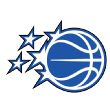
As the Orlando Magic build around No. 1 overall pick Paolo Banchero, they brought back a pair of players from last year's team.
Technically, Gary Harris never hit free agency, as he officially signed a two-year, $26 million extension on Thursday before his contract expired. Per our Bobby Marks, the second year of that contract is non-guaranteed, giving Orlando maximum flexibility.
When Harris went to the Magic as matching salary in the Aaron Gordon trade, he seemed like a strange fit on a rebuilding team. However, Harris got healthy in Orlando and produced at his highest level since 2018-19, making this a happy partnership. The Magic might still look to trade Harris to a contender at the deadline, when he'll be easier to move at a lower salary than the $20.5 million he made last season.
It looked like Mo Bamba's Orlando days might be numbered when the Magic declined to make the $10.1 million qualifying offer necessary to keep him a restricted free agent. Instead, Orlando struck a two-year deal reported at $21 million by Yahoo! Sports. It wouldn't be surprising if the Magic didn't protect the entire 2023-24 salary, which would explain preferring this deal to a one-year qualifying offer at almost the same annual value.
Banchero's arrival might usurp the starting role Bamba played next to Wendell Carter Jr. last season, when Bamba averaged 10.6 points and 8.1 rebounds, both career highs. Bamba has developed into a capable enough shooter (38% on 3s) to serve as a stretch 4 on offense while protecting the rim (2.3 blocks per 36 minutes) on defense. Whether starting or more likely coming off the bench, he'll be a key part of Orlando's frontcourt rotation.
Raptors retain key reserves
 Of the 10 players who saw more than 10 minutes of action for the Toronto Raptors in last year's first-round loss to the Philadelphia 76ers, just two were free agents: forwards Chris Boucher and Thaddeus Young. Toronto wrapped up deals to bring both players back on the opening day of free agency.
Of the 10 players who saw more than 10 minutes of action for the Toronto Raptors in last year's first-round loss to the Philadelphia 76ers, just two were free agents: forwards Chris Boucher and Thaddeus Young. Toronto wrapped up deals to bring both players back on the opening day of free agency.
In Young's case, it's technically a two-year extension to his expiring contract, meaning it was signed Thursday. Per ESPN's Bobby Marks, it's a two-year deal with an $8 million base salary both seasons plus $500,000 incentives. Just $1 million of Young's 2023-24 salary is guaranteed for now, making this a value deal for the Raptors.
The younger Boucher looked like one of this summer's most interesting free agents because of his versatile skill set. As Zach Kram discussed in a feature for The Ringer, Boucher's combination of offensive rebounding, shot blocking and 3-point shooting is one-of-a-kind. Those skills make Boucher one of the important combo bigs I discussed earlier this week that can play power forward in the regular season and center in the playoffs.
Recognizing Boucher's value, Toronto rewarded him with a deal that surpasses what teams with the non-taxpayer midlevel exception could offer Boucher without using cap space. Although Boucher is atypically old for a player in his fifth season -- he was 24 coming out of Oregon -- this contract taking him through his early 30s should be one of this summer's best investments.
Wolves go slow mo
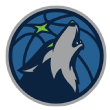 The Minnesota Timberwolves agreeing to a two-year, $18 million deal with Kyle Anderson on the opening day of free agency, as reported by our Adrian Wojnarowski, took on new context when the team made a deal for center Rudy Gobert on Friday.
The Minnesota Timberwolves agreeing to a two-year, $18 million deal with Kyle Anderson on the opening day of free agency, as reported by our Adrian Wojnarowski, took on new context when the team made a deal for center Rudy Gobert on Friday.
Although Minnesota favoring a forward over a center makes far more sense now, Anderson's fit becomes a bit trickier. He certainly works ideally at power forward next to Karl-Anthony Towns in offense-heavy lineups where Towns' elite shooting compensates for the fact that Anderson's own 3-point performance regressed in 2021-22. After hitting 36% of his 3s and attempting 3.8 per game in 2020-21, those marks dropped to 33% (Anderson's career average) and 1.8 last season.
Even as a marginal shooter, Anderson was still a key part of Memphis' second units with his terrific playmaking for his size (6-foot-9) and his defense. Those skills should help the Timberwolves make it work when Anderson shares the frontcourt with Gobert in lineups that should be stout defensively but spacing-challenged on offense.
I wouldn't recommend Minnesota plan on using Anderson at small forward next to both Gobert and Towns regularly. Despite playing Anderson with another good stretch big in Jaren Jackson Jr., the Grizzlies were far better the last few seasons with Anderson at the 4 than the 3. Per my analysis of lineup data from NBA Advanced Stats, Memphis had a minus-11.7 net rating in 245 minutes with Anderson playing small forward as compared to plus-6.4 in the bulk of his playing time at power forward.
Given the Timberwolves got Anderson for less than their entire non-taxpayer midlevel exception, I think they'll still get solid value if Anderson plays something more like the 21.5 MPG he averaged last season than the 27.3 he played as a full-time starter in 2020-21.
Mavs keep Pinson
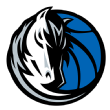 Mark Cuban better prepare to pay more fines for bench violations. Theo Pinson, the ringleader of the group of Dallas Mavericks who brought the team a series of playoff fines for bench decorum issues including standing for an extended period, standing away from the bench and encroaching on the court, will be back with the team according to our Adrian Wojnarowski.
Mark Cuban better prepare to pay more fines for bench violations. Theo Pinson, the ringleader of the group of Dallas Mavericks who brought the team a series of playoff fines for bench decorum issues including standing for an extended period, standing away from the bench and encroaching on the court, will be back with the team according to our Adrian Wojnarowski.
As ESPN's Tim MacMahon noted, Pinson is no longer eligible for a two-way contract because he has three years of NBA experience. After dealing four players to the Houston Rockets for Christian Wood and losing Jalen Brunson to the New York Knicks, the Mavericks have plenty of open roster spots to continue Pinson's development -- and the fines.
Drummond adds size for Chicago
 Finding a reliable backup for starting center Nikola Vucevic was a major challenge for last season's Bulls, who didn't seem to trust Tony Bradley (10.0 MPG) and signed Tristan Thompson after a buyout using the biannual exception only to see Thompson struggle in the playoffs (four points and eight rebounds in 38 minutes over five games).
Finding a reliable backup for starting center Nikola Vucevic was a major challenge for last season's Bulls, who didn't seem to trust Tony Bradley (10.0 MPG) and signed Tristan Thompson after a buyout using the biannual exception only to see Thompson struggle in the playoffs (four points and eight rebounds in 38 minutes over five games).
As a result, backup center was surely a priority for Chicago in free agency, and the team adds a two-time All-Star in Andre Drummond. By contrast to some of the aged players bouncing around in free agency, Drummond will be 29 at the start of training camp and is coming off a solid season started with the Philadelphia 76ers and concluded with the Brooklyn Nets as part of the James Harden trade.
The Sixers legitimately missed Drummond after the trade, while he started every game he played in Brooklyn, including all four in the playoffs. More so than the previous season as a buyout pickup by the Los Angeles Lakers, Drummond accepted his role as a screener, rebounder and finisher. He earned a modest raise on this deal, which will pay him a tad more ($3.3 million per season) than his minimum and includes a player option allowing Drummond back into free agency again if he plays well.
Monk heads north up the 5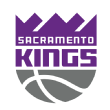
This time a year ago, Malik Monk didn't get a qualifying offer from the Charlotte Hornets and took a one-year "prove it" deal at the minimum with the Los Angeles Lakers. Monk proceeded to do just that, emerging as a bright spot in a lost Lakers season by starting 37 games and averaging a career-high 13.8 PPG.
Because Monk was on a one-year deal, the Lakers couldn't offer him any more to come back than the $6.5 million taxpayer midlevel. Instead of taking his chances building his value again and using early Bird rights to re-sign next summer, Monk went from SoCal to NorCal, signing a two-year, $19 million deal with the Sacramento Kings.
Now that the Kings have added another young shooting guard in Kevin Huerter via trade Friday, it's unclear whether Monk will start in Sacramento. Either way, he'll play a big role while being reunited with his Kentucky teammate De'Aaron Fox. Monk's high-volume 3-point shooting (39% on 7.4 attempts per 36 minutes last season) is a good fit next to Fox and Davion Mitchell, who will benefit from the floor spacing provided by Huerter and Monk.
Monk won't help as much at the defensive end of the court, where he's a below-average rebounder and generates relatively few steals. But $9.5 million on a short-term deal is a good investment in a player who could continue to grow at age 24. From Monk's perspective, this contract gets him back into unrestricted free agency just as he's in his prime years.
Thunder take care of Dort
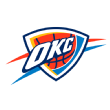 Thanks to a team option on the final season of Luguentz Dort's four-year minimum contract, Oklahoma City faced a choice this summer. The Thunder could keep Dort at the minimum ($1.9 million) and let him become an unrestricted free agent in 2023 or re-sign him now with matching rights to protect them. Oklahoma City decided to be proactive, signing Dort to a monster five-year, $87.5 million deal that confirms him as part of the team's core.
Thanks to a team option on the final season of Luguentz Dort's four-year minimum contract, Oklahoma City faced a choice this summer. The Thunder could keep Dort at the minimum ($1.9 million) and let him become an unrestricted free agent in 2023 or re-sign him now with matching rights to protect them. Oklahoma City decided to be proactive, signing Dort to a monster five-year, $87.5 million deal that confirms him as part of the team's core.
Remarkably, Dort joins max All-Stars Bradley Beal and Zach LaVine as one of three players to get five-year deals so far in free agency. Unlike those stars, in this case the long-term deal is likely about the Thunder getting Dort under contract for as much of his 20s as possible. Having gone undrafted at age 20, Dort won't turn 28 until just after the final regular season of this deal.
Playing for a rebuilding Oklahoma City team has given Dort the ability to stretch his legs offensively. He had a 23% usage rate last season while improving his true shooting percentage to .541 -- still not league average, but not bad for a defensive-minded player creating so much of his own offense. Since Dort is a mediocre outside shooter (33% from 3-point range both in 2021-22 and for his career), it will be interesting to watch whether he can keep improving his efficiency as the Thunder adds more talent around him.
Either way, Dort will be a defensive menace. He burst on the scene at that end, serving as a wing stopper for a Thunder team that reached the playoffs as a rookie originally signed to a two-way contract. At 6-foot-3, Dort often gives up size to his opposing number but is rarely at a disadvantage in terms of strength because he's built like an NFL linebacker. Dort also has quick feet to contain opponents 1-on-1, though it would be nice to see him generate more steals than he has the past two seasons.
It's great to see Dort's work be rewarded after three years playing for the minimum. Although the luxury tax is a concern, believe it or not, Oklahoma City could structure this deal to start at its maximum point and descend, meaning Dort would be making around $15 million by the final season. That far down the road, with a new TV deal kicking in, $15 million might be typical money for a reserve rather than a starter.
Warriors retain Looney, add DiVincenzo
 It was a tough start to free agency for the defending champs, who saw two key pieces of last year's team agree to sign elsewhere: Gary Payton II to the Portland Trail Blazers and Otto Porter Jr. to the Toronto Raptors. Meanwhile, veteran Nemanja Bjelica is set to return to Turkey.
It was a tough start to free agency for the defending champs, who saw two key pieces of last year's team agree to sign elsewhere: Gary Payton II to the Portland Trail Blazers and Otto Porter Jr. to the Toronto Raptors. Meanwhile, veteran Nemanja Bjelica is set to return to Turkey.
As a result, Golden State needed the win Kevon Looney agreeing to return for what seems like a discount provided. Per ESPN's Adrian Wojnarowski, the Warriors' starting center is coming back for $25.5 million over three years -- substantially less than he could have gotten using another team's non-taxpayer midlevel exception.
Of Golden State's free agents, I think Looney was probably the biggest priority to return despite the presence of No. 2 overall pick James Wiseman on the depth chart. It's been too long since we've seen Wiseman on the court (April 2021) for the Warriors to count on him replacing Looney as a starter, particularly given the valuable development time Wiseman has lost.
Meanwhile, Looney keeps proving his importance to Golden State. He played all 82 games for the Warriors in 2021-22 and, after losing his starting job early in the postseason, reclaimed it with dominant offensive rebounding and impressive defensive versatility. Even in a reserve role, Looney was one of Golden State's best players in the NBA Finals.
Though it may seem like Looney has been with the Warriors forever -- he was drafted immediately after they won their first title -- he's still just 26. This deal covers the remainder of Looney's 20s.
Golden State still has the taxpayer midlevel exception available to replace Payton and Porter with another perimeter player, though many of their minutes will probably go to 2021 first-round picks Jonathan Kuminga and Moses Moody. The departures might also increase the chances of the Warriors re-signing guard Damion Lee, an unrestricted free agent.
Porter's departure left Golden State the taxpayer midlevel exception to use on Friday afternoon's reported two-year, $9.3 million deal for guard Donte DiVincenzo. Earlier in the day, I speculated DiVincenzo would probably be my favorite buy-low contract of free agency. That proved the case as the Warriors didn't need to use their entire midlevel to sign him, leaving some to ink second-round pick Ryan Rollins to a deal longer than two years.
DiVincenzo's market created after an ankle injury during the Milwaukee Bucks' run to the 2021 title required surgery that sidelined him the first two months of last season. After returning, DiVincenzo wasn't the same player he'd been as Milwaukee's starter prior to his injury, struggling from 3-point range.
Following a deadline trade to Sacramento, DiVincenzo perked up from 3, shooting 37% the rest of the way and averaging 10.3 PPG off the bench. However, he still struggled on 2s, finishing the season at 37% inside the arc after hitting 47% of those attempts in 2020-21. The DiVincenzo we saw in Milwaukee was easily worth at least $10 million heading into his prime years (he's age 25), so if that player returns after a full offseason Golden State is getting an enormous bargain.
Despite hitting 38% of his 3s in 2020-21, DiVincenzo has never been a pure 3-and-D player. At the same time, he's a good ballhandler and passer for that archetype. DiVincenzo's strong decision-making, honed winning a championship under Jay Wright at Villanova, should serve him well in the Warriors' offense. (Wright was an assistant coach for the U.S. men's national team alongside Golden State coach Steve Kerr up through last year's Olympics.)
If Wright returns to form, a player option on the second season will allow him to return to free agency. Although the Warriors would probably struggle to re-sign DiVincenzo next summer using non-Bird rights, they'd surely welcome that outcome and look for the next value pickup.
Blazers fill out rotation with Nurkic, Payton II
 After striking a new contract with restricted free agent Anfernee Simons in the opening hours of free agency, the Portland Trail Blazers continued their offseason work with reported deals to bring back starting center Jusuf Nurkic (four years, $70 million, per his agency, Klutch Sports) and add Gary Payton II from the Golden State Warriors (three years, $28 million, according to ESPN's Kendra Andrews) using the non-taxpayer midlevel exception.
After striking a new contract with restricted free agent Anfernee Simons in the opening hours of free agency, the Portland Trail Blazers continued their offseason work with reported deals to bring back starting center Jusuf Nurkic (four years, $70 million, per his agency, Klutch Sports) and add Gary Payton II from the Golden State Warriors (three years, $28 million, according to ESPN's Kendra Andrews) using the non-taxpayer midlevel exception.
A vision is developing under new GM Joe Cronin: Surround Lillard, Simons and Nurkic with athleticism, versatility and defense. Aside from the two small guards and the centers, everyone else in the rotation can defend multiple positions, giving coach Chauncey Billups lineup flexibility and the ability to take the toughest defensive assignments off the plates of Lillard and Simons.
As for Nurkic, he's been a reliable starting center apart from the time he missed after suffering a gruesome facture of his lower left tibia in March 2019. Nurkic returned in the 2020 bubble and enjoyed one of his most productive seasons in 2021-22, averaging 15.0 points and 11.1 rebounds per game on a career-best 53.5% shooting, while playing all but three games until he was shut down after the All-Star break because of plantar fasciitis in his left foot. (The Blazers' pursuit of a lottery pick surely made that decision easier.)
The one big concern is that Nurkic's shot-blocking dropped almost by half last season from 4% of opponent 2-point attempts in 2020-21 to barely 2% -- far worse than the average for centers (about 3.6%). Although blocked shots are an imperfect measure of rim protection, advanced numbers suggest similar decline. Opponents made 69% of their attempts within 5 feet with Nurkic as the primary defender, per Second Spectrum tracking on NBA Advanced Stats, worst of any center that defended at least 200 such shots. That ballooned from 56% the previous season.
For Portland to make a jump up from 29th in the NBA in defensive rating in 2021-22, Nurkic must prove as comfortable and effective in Billups' defensive scheme as he was playing drop coverage and staying near the basket under former coach Terry Stotts.
Although Nurkic won't turn 28 until August, the drop in shot-blocking produces some concern about how he'll age. Nurkic has dealt with serious injuries, including surgery to repair a partial tear of his patella tendon after his rookie season. The Blazers are betting on Nurkic staying healthy over the course of a four-year deal that pays him substantially more than other teams could have offered without using cap space.
Payton is getting a massive raise after never previously making more than the minimum salary in parts of six NBA seasons. He earned it with an impressive 2021-22 campaign with the champion Golden State Warriors, finding a new role as a screener in addition to hitting a career-high 36% of his 3-point attempts. There's never been any question about Payton's elite defense; he merited All-Defensive consideration despite averaging just 17.6 minutes per game for the Warriors.
Portland outbid Golden State for Payton, bringing him back to the state where he (like his Hall of Fame father) starred at Oregon State University. (Payton is also reunited with Beavers teammate Drew Eubanks, returning on a one-year deal, per Wojnarowski.) Payton's contract uses the bulk of the Blazers' non-taxpayer midlevel exception but leaves enough left that they could sign second-round pick Jabari Walker to a contract longer than two years if desired.
Pending Portland's decisions on whether to fill the 15th roster spot and whether to stretch the $3.9 million guaranteed portion of Eric Bledsoe's contract -- which must be waived before the Blazers can use the non-taxpayer midlevel exception because of the hard cap it triggers -- the team could start the season just over the luxury-tax line. If so, however, Portland should be close enough to get out of the tax before the deadline.
Nuggets sign Bruce Brown
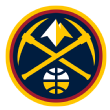 After dealing a pair of starters last season (Will Barton and Monte Morris) for one who projects as a starter (Kentavious Caldwell-Pope) earlier this week, Denver will replenish some of that depth by signing Bruce Brown Jr. away from the Brooklyn Nets for what ESPN's Malika Andrews reported is a two-year deal for a little more than $13 million, with a player option on the second season.
After dealing a pair of starters last season (Will Barton and Monte Morris) for one who projects as a starter (Kentavious Caldwell-Pope) earlier this week, Denver will replenish some of that depth by signing Bruce Brown Jr. away from the Brooklyn Nets for what ESPN's Malika Andrews reported is a two-year deal for a little more than $13 million, with a player option on the second season.
Brown's contract utilizes the Nuggets' taxpayer midlevel exception, their only avenue for adding players in free agency at more than the veterans minimum. At that price, Brown looks like both a great fit and great value.
Having started a combined 82 games over his two seasons in Brooklyn, Brown is capable of stepping in at small forward if Michael Porter Jr. continues to deal with back issues after undergoing season-ending surgery last year. Alternatively, lineups with Brown and Porter at the forward spots should be effective because Porter is big enough to guard opposing 4s while Brown fills that role on offense -- a position he sort of invented, as I wrote about earlier this year.
Just how effective Brown will be hinges on his ability to maintain last season's career-best 40% 3-point shooting, which was out of line with his overall mark (33%). If opponents have to pay attention to Brown beyond the arc, it makes it easier to play him at small forward alongside Aaron Gordon and fits Denver's vision of putting strong shooters and defenders around the duo of Jamal Murray and two-time MVP Nikola Jokic.
Either way, Brown's unorthodox ability to find open spaces as a cutter makes him an ideal complement to Jokic's court vision.
The value was good enough for the Nuggets that they do have to worry about losing Brown next season, when they'll be able to offer only a 20% raise using non-Bird rights if he declines his player option. Denver might have to sell Brown on signing another short-term deal to establish early Bird rights, which we've seen the LA Clippers (Nicolas Batum) and Milwaukee Bucks (Bobby Portis) utilize to retain players this summer.
I still don't love the Nuggets downgrading at backup point guard with Murray coming back from an ACL tear, and they'd have to utilize a trade exception to add a quality reserve there, but the theory of Denver's trade with the Washington Wizards makes a lot more sense in the context of adding Brown.
Ricky Rubio returns to the Cavaliers
 In one of the happier developments of NBA free agency thus far, Ricky Rubio is returning to Cleveland on a three-year, $18 million deal, per ESPN's Adrian Wojnarowski. Dealt to the Cavaliers on draft night last year, Rubio played a key role in the team's surprisingly strong start, averaging 28.5 minutes per game, primarily off the bench, before suffering an ACL tear -- his second to the same knee -- on Dec. 28.
In one of the happier developments of NBA free agency thus far, Ricky Rubio is returning to Cleveland on a three-year, $18 million deal, per ESPN's Adrian Wojnarowski. Dealt to the Cavaliers on draft night last year, Rubio played a key role in the team's surprisingly strong start, averaging 28.5 minutes per game, primarily off the bench, before suffering an ACL tear -- his second to the same knee -- on Dec. 28.
At the time Rubio went down, Cleveland was fifth in the East at 20-14. Although some regression was inevitable and the team dealt with other key injuries in the second half, losing Rubio's playmaking and on-court leadership was a factor as the Cavaliers went 24-24 the rest of the way and lost in the play-in tournament.
By that point, Rubio was officially a member of the Indiana Pacers, having been sent to Indiana as matching salary in Cleveland's deal for Caris LeVert. Despite giving up Bird rights on Rubio in that trade, the Cavaliers were able to bring him back on a deal that could use the taxpayer portion of their midlevel exception, depending what else they do this offseason.
Later Friday, Cleveland reached agreement on a reported one-year deal with veteran center Robin Lopez. With All-Star Jarrett Allen starting at center and Evan Mobley capable of sliding down from power forward, the Cavaliers likely view Lopez primarily as insurance. Having spent the past year as a veteran mentor with the Orlando Magic, Lopez should also be a positive addition and he's always capable of coming off the bench and unleashing a barrage of hook shots.
The Cavaliers still have to deal with restricted free agent Collin Sexton. The luxury tax is becoming a concern for Cleveland, which can afford to pay Sexton about $15 million and stay under the tax line this season.
Knicks reach long-term deal with Mitchell Robinson
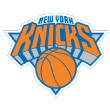 When the Knicks began aggressively pursuing cap space to sign Jalen Brunson, Mitchell Robinson was one of the biggest winners.
When the Knicks began aggressively pursuing cap space to sign Jalen Brunson, Mitchell Robinson was one of the biggest winners.
Robinson's tiny cap hold, coming off a minimum contract ($1.8 million), enabled New York to sign Brunson first, then exceed the cap to pay Robinson any amount using full Bird rights. He leveraged that into a four-year, $60 million deal, according to Adrian Wojnarowski.
Had New York made the same move last summer that the Houston Rockets (Jae'Sean Tate) and Oklahoma City Thunder (Lu Dort) made with their free agents this year -- declining a team option for the minimum in order to make them restricted free agents -- the Knicks probably would have gotten Robinson back on a smaller contract. He solidified his value by starting a career-high 62 games at age 23 (he turned 24 just before the end of the regular season), demonstrating increased reliability.
Perhaps the NBA's premier above-the-rim finisher out of the pick-and-roll, Robinson shot 76% from the field on a diet of primarily dunks -- highest in league history for a player with more than 250 shot attempts, per Stathead.com. Robinson is also a strong rim protector, a necessity in Tom Thibodeau's defensive scheme. Opponents made 54% of their attempts within 5 feet of the hoop when Robinson was the primary defender last season, ranking 11th among players who defended at least 200 shots, according to Second Spectrum tracking on NBA Advanced Stats.
I'm a little surprised the market for Robinson was so far above the non-taxpayer midlevel exception with so few teams holding cap space, but given that it takes Robinson through his mid-20s, he should match the value.
Jokic, Booker and KAT get the supermax
In a flurry of reports just after the clock struck midnight July 1 on the East Coast, ESPN's Adrian Wojnarowski announced supermax extensions for all three NBA veterans eligible by virtue of making All-NBA last season: Devin Booker of the Phoenix Suns, Nikola Jokic of the Denver Nuggets (who also qualified with his back-to-back MVPs) and Karl-Anthony Towns of the Minnesota Timberwolves.
From a structural standpoint, the only difference in these extensions is how many years the players have remaining on their current contracts. Because Booker and Towns each have two seasons left, they were eligible to add a maximum of four starting in 2024-25. Jokic, entering the final year of his contract, tacked on five more at a projected $260 million, making this the new largest deal in NBA history.
It's a measure of how atypically settled Jokic is with the Nuggets that there was never really any anticipation about whether he would test free agency next summer rather than signing the supermax, in marked contrast to his similarly low-key MVP predecessor, Giannis Antetokounmpo. No teams started posturing to clear space for Jokic.
There was far more anticipation a few years ago about the possibility of Booker and Towns changing teams when their own were floundering. The arrival of Chris Paul changed Phoenix's trajectory and made it clear that Booker would stay long term, while the Timberwolves' future looks brighter than it has in years with the arrival of No. 1 pick Anthony Edwards and a return to the playoffs.
Unlike Jokic, who would have been supermax-eligible as a free agent next season, there was probably a bit more urgency for Booker and Towns to lock in now. Last year was Booker's first time making an All-NBA team -- it likely won't be his last -- while Towns faces stiff competition at center with Jokic and Joel Embiid also in the mix. He hadn't made it since 2017-18, not coincidentally the previous time Minnesota reached the playoffs.
These deals look like the supermax working as intended. Because these three players are all so young, supermaxes will take them only into their early 30s. (Jokic will be 33 at the end of his deal, Towns 32 and Booker 31.) Although that doesn't always guarantee success, they've got skill sets that figure to age well because of their shooting and versatility. As a result, this is a happy night for all three teams.
Morant strikes designated rookie extension
 Because the NBA's change of moving up the start of free agency to a more reasonable hour (6 p.m. ET on June 30 rather than midnight July 1) doesn't apply to extensions, Grizzlies fans had to stay up late to get the news from ESPN's Adrian Wojnarowski that Ja Morant is signing for five seasons beyond 2022-23, the final year of his rookie contract.
Because the NBA's change of moving up the start of free agency to a more reasonable hour (6 p.m. ET on June 30 rather than midnight July 1) doesn't apply to extensions, Grizzlies fans had to stay up late to get the news from ESPN's Adrian Wojnarowski that Ja Morant is signing for five seasons beyond 2022-23, the final year of his rookie contract.
The largest possible deal for Morant was always something of a fait accompli, though he's still got work to do to push the value of this contract from the typical max for players in their first seasons (25% of the 2023-24 salary cap, or a projected $193 million, according to ESPN's Bobby Marks) to the largest possible 30% ($231 million).
Because Morant has only one All-NBA appearance to his credit, he'll have to make one of the three teams again this season to qualify. That's certainly more likely than not if Morant stays healthy -- he was voted second team this year despite missing 25 games -- but not a certainty.
Either way, a breakthrough campaign that saw Memphis win 56 games and advance in the playoffs for the first time since 2015 cemented Morant as the building block of a contending team. Given Morant won't turn 23 until August, he shouldn't yet be anywhere close to his peak at a position where players continue to develop well into their 20s.
The size of Morant's extension could have some ramifications for the rest of the roster. With just two other Grizzlies players under contract for more than $5 million in 2023-24 (Jaren Jackson Jr. and Tyus Jones, the latter agreeing to a two-year deal Thursday), the team could hypothetically create cap space to build around its young core.
More realistically, Memphis will look to retain impending free agents Steven Adams, Dillon Brooks and Brandon Clarke to continue growing from within.
Brunson joins Knicks on four-year, $104M deal
 As with the Dallas Mavericks, Jalen Brunson should create the bulk of his offense out of pick-and-roll situations. Despite playing with Luka Doncic, who ranked No. 1 in the league by getting 74.1 on-ball screens per 100 possessions according to Second Spectrum tracking, Brunson still managed to run nearly as many per possession (34.2) as Stephen Curry (34.5). With Luka on the bench, that skyrocketed to 53.2, sixth-highest in the league.
As with the Dallas Mavericks, Jalen Brunson should create the bulk of his offense out of pick-and-roll situations. Despite playing with Luka Doncic, who ranked No. 1 in the league by getting 74.1 on-ball screens per 100 possessions according to Second Spectrum tracking, Brunson still managed to run nearly as many per possession (34.2) as Stephen Curry (34.5). With Luka on the bench, that skyrocketed to 53.2, sixth-highest in the league.
Dating back to his time with the Chicago Bulls, New York coach Tom Thibodeau has always favored pick-and-roll offenses for his point guards.
Derrick Rose won the MVP in his first season after Thibodeau arrived in Chicago, and Nate Robinson and D.J. Augustin later enjoyed career years filling in for Rose while he was injured.
With the Knicks, Thibodeau has been reunited with Rose, who has played at a high level when healthy the past two seasons. Beyond him, Thibodeau has had few reliable pick-and-roll playmakers. Elfrid Payton's non-shooting made him a limited threat as New York's starter in 2020-21, while Alec Burks was playing out of position during the 2021-22 season after replacing Kemba Walker at the point. There should be little doubt that Brunson is an upgrade on those options.
MORE: How Brunson fits next to Randle and Barrett
Wizards max out Beal
 Because Bradley Beal preferred to reach free agency, allowing him to sign a five-year contract for his maximum salary ($251 million, plus some pocket change), Washington had to sweat out the possibility of losing him. Ultimately, that wasn't much of a threat. Beal wasn't interested in foregoing the fifth guaranteed year to try to figure out a complicated sign-and-trade.
Because Bradley Beal preferred to reach free agency, allowing him to sign a five-year contract for his maximum salary ($251 million, plus some pocket change), Washington had to sweat out the possibility of losing him. Ultimately, that wasn't much of a threat. Beal wasn't interested in foregoing the fifth guaranteed year to try to figure out a complicated sign-and-trade.
Instead, Beal remains with the team that drafted him third overall in 2012. The Wizards' path toward contending with Beal remains murky, and it's possible at some point either player or team (or both) will determine this partnership no longer works. In that case, Beal already has his contract situated, while Washington will hope he remains as valuable at a higher salary as he was on the verge of hitting free agency.
Having dealt with John Wall's Achilles surgeries and subsequent decline, the Wizards better than anyone know the risks associated with a long-term contract to a player heading into his 30s. Beal's game figures to age better than Wall's, but Washington surely hopes Beal can regain the shooting form that allowed him to hit better than 40% of his catch-and-shoot 3s in four of the first five seasons since camera tracking began.
Starting in 2018-19, Beal hasn't been better than 40% on catch-and-shoot 3s, according to Second Spectrum tracking, and he dropped to a career-low 29% last season -- probably a fluke, and partially responsible for Beal's drop from 30-plus PPG the previous two seasons to 23.2 last year. By dealing for Monte Morris earlier this week, the Wizards have given Beal a better distributor next to him at point guard.
Even with that deal adding salary, Washington is still positioned to pay Beal the max and be able to spend a large portion of the non-taxpayer midlevel exception while staying under the tax line. The Wizards' payroll shouldn't become a major concern until Morris and Kyle Kuzma are due for new contracts in the summer of 2024.
Tucker headlines a Rockets reunion in Philly
 After being eliminated from the playoffs by the Miami Heat last month, 76ers players and coaches noted that the Heat had an advantage in terms of toughness during the series. Star center Joel Embiid even highlighted P.J. Tucker specifically as part of Miami's edge.
After being eliminated from the playoffs by the Miami Heat last month, 76ers players and coaches noted that the Heat had an advantage in terms of toughness during the series. Star center Joel Embiid even highlighted P.J. Tucker specifically as part of Miami's edge.
"You look at someone like P.J. Tucker," Embiid told reporters. "Great player, but it's not about him knocking down shots. It's about what he does on the defensive end or rebounding the ball. You look at, obviously, defensively he plays with so much energy, believes that he can get from Point A to Point B, and he believes that no one can beat him. And he's tough, he's just physical and he's tough.
"They have a few of those guys, whether it's Bam [Adebayo] and all those guys. And since I've been here, I'd be lying if I said that we've had those types of guys. Nothing against what we have, it's just the truth."
Well, now they do thanks to a deal Tucker's agent told The Athletic will be for $33 million over three years. Tucker was clearly a priority for Philadelphia, enough to influence James Harden's next contract. Had Harden exercised his $47.2 million player option, the 76ers would have had only their smaller taxpayer midlevel exception to offer Tucker -- less than he could have made re-signing with the Heat or going to a team with the full midlevel available.
Add in Philadelphia also using the biannual exception to sign Danuel House Jr. -- like Tucker, a former teammate of Harden's with the Houston Rockets under then-GM Daryl Morey -- and that leaves a maximum possible starting salary for Harden of about $38.8 million in order for the Sixers to stay under the hard cap at the luxury-tax apron triggered by using those two exceptions. (Realistically, Harden's contract will probably start even less than that to make sure Philadelphia has some in-season wiggle room.)
Given speculation about Tucker heading to Philly, I discussed his fit as a backup to Embiid at center in a piece earlier this week highlighting Tucker's value. I didn't talk as much about how Tucker works as a possible starter.
Although the 76ers have two havoc-wreaking perimeter defenders in newcomer De'Anthony Melton and Matisse Thybulle, they lacked a stopper with size. Tobias Harris did well in that role during the playoffs, but it isn't the strength of his game. Enter Tucker, capable of covering a variety of different opposing high scorers. So too is House, giving Philadelphia's coaching staff far more options defensively.
After this season, the Sixers' roster will get far more expensive when Embiid's supermax extension kicks in, increasing his salary by a projected $13 million. It's unclear what kind of sacrifices might be needed then. For now, Philadelphia has dramatically improved defensively while also upgrading its shooting.
This roster is a much better fit around the duo of Embiid and Harden. We'll see whether that's enough to result in a deeper playoff run after two consecutive losses in the conference semifinals.
Blazers retain budding Simons
 By forgoing an extension to his rookie contract last fall, Anfernee Simons bet on himself and won. Taking full advantage of the opportunity created by Damian Lillard's abdominal injury and later CJ McCollum being traded to the New Orleans Pelicans, Simons proved he can be effective leading the Portland offense. Now he'll make up to $25 million a year over the next four seasons.
By forgoing an extension to his rookie contract last fall, Anfernee Simons bet on himself and won. Taking full advantage of the opportunity created by Damian Lillard's abdominal injury and later CJ McCollum being traded to the New Orleans Pelicans, Simons proved he can be effective leading the Portland offense. Now he'll make up to $25 million a year over the next four seasons.
In 30 starts, Simons averaged 22.0 PPG and 5.5 APG while improving his efficiency. Thanks in large part to 41.5% 3-point shooting, Simons posted a .600 true shooting percentage in those games despite ramping up his usage to 27% of the team's plays per Basketball-Reference.com.
All told, Simons' production was strikingly similar to what McCollum averaged alongside Lillard in the Blazers' backcourt. The younger Simons will likely play a similar role with Lillard back healthy in 2022-23, starting at shooting guard but getting the ball in his hands to lead second-unit lineups when Lillard rests.
Offensively, that combo should be potent. Simons has emerged as one of the league's more dangerous shooters, ranking second among players with at least 150 catch-and-shoot 3-point attempts in accuracy last season (47%) according to Second Spectrum tracking. Like McCollum, his pick-and-roll proficiency will allow Portland to take advantage of defenses tilted toward Lillard or enable Lillard to work off the ball.
As with the Lillard-McCollum pairing, the questions are all at the defensive end. At a listed 6-foot-3, Simons is undersized for a shooting guard and the Blazers have tended to be weaker defensively with him on the court. The three-year, luck-adjusted version of RAPM from NBAshotcharts.com estimates Simons' defensive impact at minus-2.1 points per 100 possessions, putting him in the bottom 10 leaguewide.
Between newcomer Jerami Grant and holdovers Josh Hart and Nassir Little, Portland now has more options to take on more challenging defensive matchups on the perimeter. Still, hiding two below-average defenders in the backcourt will be a challenge for coach Chauncey Billups, making it imperative that Simons show progress at that end of the court.
Despite those concerns, signing Simons up for the full four years is a positive for the Blazers. Drafted at barely age 19, Simons won't turn 27 until just before this contract expires. If there are more leaps like we've seen the last two seasons, he'll be a coveted unrestricted free agent at that point.
Assuming maximum 8% raises, Simons' contract will start at a bit more than $22 million this season. That gives Portland about $33 million in spending power before reaching the luxury-tax threshold if Eric Bledsoe is waived before his full 2022-23 salary guarantees on July 10. That should be enough for the Blazers to re-sign starting center Jusuf Nurkic and use the bulk of the team's non-taxpayer midlevel exception to add depth.
Bucks bring back Portis, add Ingles
 Bobby Portis returning to the Milwaukee Bucks on a two-year deal with a player option last summer coming off a key role in the team's NBA Finals win portended the possibility of a bigger deal this year. The Bucks used non-Bird rights to pay Portis $4.4 million, which allowed him to establish early Bird rights this time around. The four-year, $49 million deal Milwaukee agreed on with Portis is the largest possible using early Bird rights.
Bobby Portis returning to the Milwaukee Bucks on a two-year deal with a player option last summer coming off a key role in the team's NBA Finals win portended the possibility of a bigger deal this year. The Bucks used non-Bird rights to pay Portis $4.4 million, which allowed him to establish early Bird rights this time around. The four-year, $49 million deal Milwaukee agreed on with Portis is the largest possible using early Bird rights.
With Brook Lopez sidelined much of last season, Portis started a career-high 59 games and set new top marks in both scoring (14.6 PPG) and rebounding (9.1 RPG). Portis' offensive versatility makes him a great fit alongside Giannis Antetokounmpo. As a 39% career 3-point shooter who boosted his attempts to 4.7 per game last season, Portis provides space for Giannis while also having the ability to mash in the paint when opponents put their center on Antetokounmpo.
Although the Bucks are still better off with Lopez starting and Portis coming off the bench, it's possible the younger Portis (27) could supplant the 34-year-old Lopez, who is heading into the final season of his contract. In that scenario, Portis' contract would be good value for a starting center.
Milwaukee's lone avenue to adding in free agency for more than the minimum was the $6.5 million taxpayer midlevel exception, which is going to longtime Utah Jazz wing Joe Ingles. Ingles is an interesting fit with the Bucks coming off an ACL tear that ended his season on Jan. 31.
Given the typical year-plus timetable for players to return from ACL injuries, Milwaukee shouldn't expect Ingles back until after the All-Star break, at which point he'd function like a deadline addition without the team having to give up anything in return. Ingles' playmaking chops will be useful on a team that can rely on station-to-station basketball. He's probably immediately the Bucks' best passer.
Just how much Ingles can help will probably depend on whether he loses a step at the defensive end of the court -- he'll turn 35 in October. The upshot for Milwaukee is the team should have enough wing depth to cover Ingles' absence, making any production he provides down the stretch a useful -- albeit expensive -- bonus.
Clippers bring back two contributors at raises
 The LA Clippers quickly took care of bringing back their two remaining rotation free agents after previously extending both Robert Covington and Ivica Zubac ahead of free agency. Retaining everyone, along with potentially using the taxpayer midlevel exception for the expected addition of John Wall, will push the Clippers' payroll north of $190 million -- blowing past last year's record of $175 million for the champion Golden State Warriors.
The LA Clippers quickly took care of bringing back their two remaining rotation free agents after previously extending both Robert Covington and Ivica Zubac ahead of free agency. Retaining everyone, along with potentially using the taxpayer midlevel exception for the expected addition of John Wall, will push the Clippers' payroll north of $190 million -- blowing past last year's record of $175 million for the champion Golden State Warriors.
In fact, the Clippers could pay more in luxury taxes alone (a projected $145-plus million) than 23 of the league's 30 teams did in player salaries last season. Of course, we know owner Steve Ballmer has the money to pay that price, and it's allowing the Clippers to retain and build on an incredibly deep team.
After two years on bargain contracts for the Clippers, who took advantage of Nic Batum still being paid by the Charlotte Hornets after they waived him in 2020, he's getting his market value this time around using early Bird rights to sign the largest possible two-year deal.
An afterthought by the end of his time in Charlotte, Batum has been reinvigorated playing with the contending Clippers. He's made 40% of his 3s each of the past two seasons, resulting in outstanding true shooting percentages north of .600. At a long-armed 6-foot-8, Batum can credibly defend any position from 1-4, giving Clippers coach Tyronn Lue a variety of defensive options.
If anything, the Clippers' improved depth should give Lue the ability to save more of Batum's energy for the playoffs after he averaged 27.4 MPG in 2020-21 and 24.8 MPG last season, starting 54 of the 59 games he played.
Part of that depth is Amir Coffey, who graduated after nearly three years on two-way deals for the Clippers to a full NBA contract just ahead of the play-in tournament. The Clippers' patience developing Coffey was rewarded as he started 30 games and played 22.7 MPG, making 38% of his 3s and playing solid perimeter defense. Now, Coffey will be rewarded with a multiyear deal that easily exceeds his minimum salaries.
Grizzlies bring back Tyus Jones
 After the Washington Wizards added Monte Morris in a trade Wednesday, there wasn't an obvious destination for Jones to become a starter in free agency after his impressive 2021-22 season filling in for and backing up Ja Morant for the Memphis Grizzlies. Instead, Jones will stick with the franchise on a two-year, $30 million deal that pays him like a low-end starter.
After the Washington Wizards added Monte Morris in a trade Wednesday, there wasn't an obvious destination for Jones to become a starter in free agency after his impressive 2021-22 season filling in for and backing up Ja Morant for the Memphis Grizzlies. Instead, Jones will stick with the franchise on a two-year, $30 million deal that pays him like a low-end starter.
Over that span, Memphis can afford the luxury of paying Jones because the team's cap sheet is so clean. The Grizzlies could still create a modicum of cap space, though they'll surely stay over the cap with their roster possibly already full. Keeping Jones offers insurance in case Morant misses an extended stretch again next season and ensures Memphis 48 quality minutes of point guard play.
The Grizzlies' roster will get more expensive in 2023-24, when Morant begins what could be a designated rookie extension and Steven Adams and Dillon Brooks are also due for new contracts, but Memphis should be able to bring everyone back without going into the luxury tax.
The bigger Grizzlies news of the day was the announcement that Jaren Jackson Jr. will be sidelined 4 to 6 months after surgery to repair a stress fracture in his right foot. If Jackson returns on that timetable, his injury will eventually be overcome, but how such injuries heal is notoriously tough to predict -- particularly for big men.
Because Memphis is running low on roster spots after drafting four players last week, the Grizzlies will probably replace Kyle Anderson -- who agreed to join the Minnesota Timberwolves -- with in-house options (including first-round picks Jake LaRavia and David Roddy).
McGee joins a crowded Mavs frontcourt
 Given Dallas had only the taxpayer midlevel exception to add to the roster in the wake of Jalen Brunson's expected departure to the New York Knicks, it was surprising to see the Mavericks prioritize adding a center (JaVale McGee) we last saw struggling to defend their five-out lineups in the conference semifinals.
Given Dallas had only the taxpayer midlevel exception to add to the roster in the wake of Jalen Brunson's expected departure to the New York Knicks, it was surprising to see the Mavericks prioritize adding a center (JaVale McGee) we last saw struggling to defend their five-out lineups in the conference semifinals.
Already, Dallas had starter Dwight Powell, who plays a similar game to McGee albeit without as much size and athleticism. Meanwhile, the Mavericks thrived in the playoffs with Maxi Kleber and even Davis Bertans as stretch 5s. Dallas' other big offseason move was to add combo big Christian Wood in a trade with the Houston Rockets.
Given Wood and Kleber can both play power forward in the regular season, the Mavericks probably can find enough minutes for all of these guys. It wouldn't be shocking if Powell, making $11 million in the final season, is eventually traded to cut Dallas' luxury-tax bill. The Mavericks are also naturally getting deeper on the perimeter with Tim Hardaway Jr.'s return from a broken left foot that ended his season in January. Still, it's hard to see how investing so heavily in players who will probably be best used at center during the playoffs makes sense.
As for McGee specifically, he earned a raise with a strong regular season for the Phoenix Suns, averaging 20.9 points and a career-high 15.2 rebounds per 36 minutes while shooting 63% from the field. McGee's rim running should fit well with Luka Doncic in the pick-and-roll game.
The concern with McGee specifically is a three-year deal with a player option on the final season -- McGee will turn 37 in January. McGee's size won't age but at some point he may no longer be capable of playing above the rim the way he has throughout his career.
Westbrook will pick up $47.1M option with Lakers
 It came as no surprise when ESPN's Adrian Wojnarowski reported that Westbrook plans to exercise his $47.1 million player option for 2022-23. It would have been impossible for Westbrook to realistically recoup that value in free agency at age 33.
It came as no surprise when ESPN's Adrian Wojnarowski reported that Westbrook plans to exercise his $47.1 million player option for 2022-23. It would have been impossible for Westbrook to realistically recoup that value in free agency at age 33.
Dating back to the news conference introducing Darvin Ham as their new head coach, the Lakers have publicly been planning for Westbrook to be back and looking for a more complementary role that offers a better chance of success.
A Westbrook trade is still possible, but the Lakers would likely have to dip into their two tradable first-round picks (in 2027 and 2029) to incentivize a team to take his salary now.
A buyout like the one the Houston Rockets struck with John Wall would make less sense for the Lakers, because Westbrook's expiring salary could become more attractive at the deadline to a team looking to shed long-term contracts.
Zubac extends with Clippers
 Facing a Wednesday deadline whether to exercise Ivica Zubac's $7.5 million team option or allow him to become an unrestricted free agent, the Clippers chose Door C: replacing the option with a three-year, $33 million extension (as reported by ESPN's Adrian Wojnarowski) that will keep Zubac under contract long-term.
Facing a Wednesday deadline whether to exercise Ivica Zubac's $7.5 million team option or allow him to become an unrestricted free agent, the Clippers chose Door C: replacing the option with a three-year, $33 million extension (as reported by ESPN's Adrian Wojnarowski) that will keep Zubac under contract long-term.
What's most interesting about that decision is the Clippers declining the team option instead of building an extension off it, a decision that will be costly this season but allows them to avoid the potential of Zubac getting a bigger offer next summer. Instead of $7.5 million, Zubac will make a minimum of $10.2 million, a raise that will cost the Clippers many multiples more in luxury-tax payments.
Based on the Clippers' current tax level, assuming John Wall gets the $6.4 million taxpayer midlevel exception, Zubac's extra $2.7 million would mean about $12.5 million more in taxes -- something that could still increase if the team re-signs forward Nicolas Batum for more than the veterans minimum.
For all the focus on the Golden State Warriors' spending last season before they won the title, the Clippers might nearly match the Warriors' payroll in 2022-23 after extending both Zubac and forward Robert Covington.
From a basketball standpoint, paying Zubac more doesn't have an alternative cost for the Clippers aside from subjecting him to trade restrictions regarding extensions for the next six months.
This extension is an illustration of why the NBA's Helen Lovejoy-style hysteria about whether free-agent conversations happen before June 30 is misguided at best and actively harmful to both teams and players at worst. In order to strike a deal like this, both the Clippers and Zubac have to get some sense of what the market would look like for him.
Preventing players and teams from gauging that interest is actively trying to promote worse decision-making that ends up with one side or the other regretting deals struck legally leading up to free agency.
Timberwolves keep Prince out of free agency
 The Minnesota Timberwolves took care of one key piece of business in free agency two days ahead of time by agreeing to a two-year extension worth $16 million with Taurean Prince, as reported by ESPN's Adrian Wojnarowski. Prince was the only free agent of note from a Timberwolves team coming off an overachieving season that culminated in a hard-fought first-round loss to the Memphis Grizzlies.
The Minnesota Timberwolves took care of one key piece of business in free agency two days ahead of time by agreeing to a two-year extension worth $16 million with Taurean Prince, as reported by ESPN's Adrian Wojnarowski. Prince was the only free agent of note from a Timberwolves team coming off an overachieving season that culminated in a hard-fought first-round loss to the Memphis Grizzlies.
Because Minnesota has one of the league's cleanest cap sheets, the Timberwolves could afford to re-sign Prince and still have more than enough room under the luxury tax to use their non-taxpayer midlevel exception, as noted by ESPN's Bobby Marks. In a marketplace where few playoff contenders have that much to offer, that could yield a quality reserve or reasonable starter for Minnesota, most likely in the frontcourt.
Down the road, the non-guaranteed second year of Prince's contract (as reported by The Athletic) allows the Timberwolves to maintain flexibility for the summer of 2023. With guards Patrick Beverley and D'Angelo Russell in the final seasons of their contracts and a team option for backup guard Malik Beasley, Minnesota could create max-level cap space to reshape the roster around stars Karl-Anthony Towns and Anthony Edwards.
Alternatively, if the Timberwolves want to keep things together, they can retain Prince at a reasonable contract for a second season. In his first season in Minnesota, Prince averaged 17.1 MPG primarily off the bench after being acquired in a deal struck on draft night. His .589 true shooting percentage was a career high, and Prince saw regular action at both forward spots, supplying valuable versatility.
Wall plans to join Clippers after reaching a buyout with the Rockets
 After a year spent on the sideline, Wall is set to return to NBA action after completing a buyout with the Houston Rockets on Monday that will give back $6.5 million of the $47.4 million he was set to make in 2022-23, per ESPN's Tim MacMahon.
After a year spent on the sideline, Wall is set to return to NBA action after completing a buyout with the Houston Rockets on Monday that will give back $6.5 million of the $47.4 million he was set to make in 2022-23, per ESPN's Tim MacMahon.
With ESPN's Adrian Wojnarowski reporting that Wall is headed to the LA Clippers, he can make up that money using their taxpayer midlevel exception, worth a projected $6.4 million. Wall heads to a contender in a destination market that has a need at point guard.
After trading Eric Bledsoe before the deadline, the Clippers had only starter Reggie Jackson as a traditional point guard the rest of the season, though they'll also add 2021 second-round pick Jason Preston to the mix after Preston missed his entire first NBA campaign due to ligament damage in his right foot that required surgery.
When Wall was last on the court, he was serving as an offensive focal point for a limited Houston team in 2020-21. Wall had a career-high 32% usage rate, while his .503 true shooting percentage was his lowest since 2011-12. We've never seen Wall surrounded by as much supporting talent as he'll have with the uber-deep Clippers, who also welcome back Kawhi Leonard to rejoin Paul George.
To some extent, that could highlight Wall's weakness as a shooter. He hit 32% of his 3s in 2020-21, right near his career mark. However, Wall has typically been much more accurate on the kind of catch-and-shoot attempts he'll get with the Clippers, hitting those at a 38% clip during the camera tracking era (back to 2013-14) per Second Spectrum data.
Additionally, Wall can take advantage of the Clippers' talent by serving as more of a pass-first point guard. He's always been a dazzling playmaker who excels at finding teammates in the corners. From 2013-14 through 2016-17, his prime years, Wall set up a league-high 1,063 corner 3-point attempts according to Second Spectrum stats. Only LeBron James set up more on a per-possession basis during that span.
It will be interesting to see how well Wall holds up defensively on a contending team. The Rockets' defensive culture was nonexistent in 2020-21, and Wall will be asked to be much more competitive at that end of the court. How well Wall holds up will primarily determine just how much he plays for the Clippers.
Kyrie decides to opt in with Nets
 By exercising his player option, Kyrie Irving removes the most vexing scenario for the Nets: the possibility of him leaving for another team via free agency with them getting nothing in return.
By exercising his player option, Kyrie Irving removes the most vexing scenario for the Nets: the possibility of him leaving for another team via free agency with them getting nothing in return.
There are, however, still plenty of ways the Irving-Brooklyn relationship could play out over the next year.
Irving could continue working with the Nets toward an agreeable long-term contract. As ESPN's Bobby Marks notes, Irving is eligible for an extension through June 30, 2023, as a player in the final year of his contract. It's possible the two sides could revisit negotiations during the season if Irving is healthy and productive.
Alternatively, Brooklyn could still trade him. In some ways, Irving exercising his option makes a trade easier than trying to find a mutually agreeable sign-and-trade deal if he became a free agent. Sign-and-trade restrictions would have made it difficult, if not impossible, for Irving to be traded to a taxpaying team such as the Los Angeles Lakers as a free agent.
In a worst-case scenario, where the Nets are ready to move on from Irving entirely by midseason, his expiring contract could allow them to take back longer-term deals from a team looking to create salary flexibility.
MORE: What Irving's opt-in means for Brooklyn's other free agents
